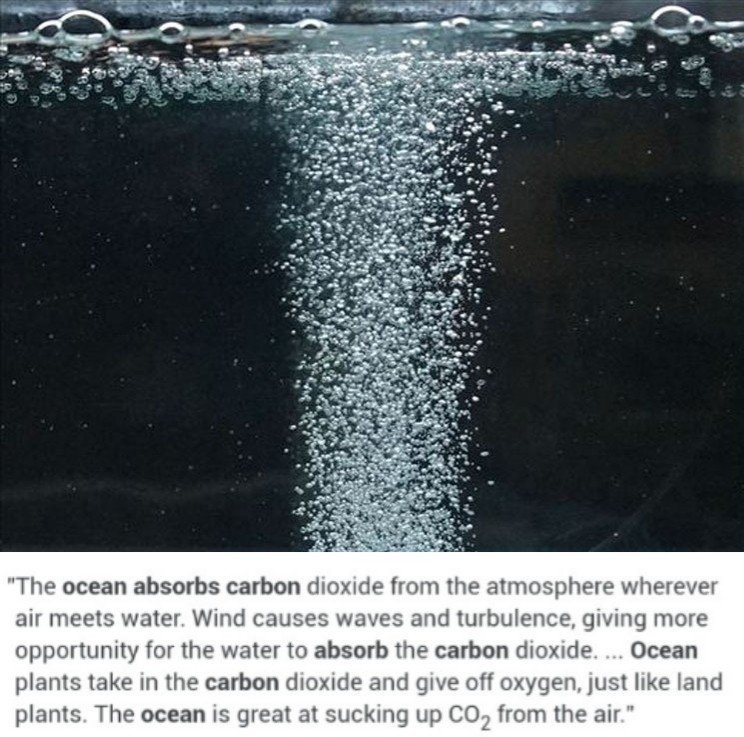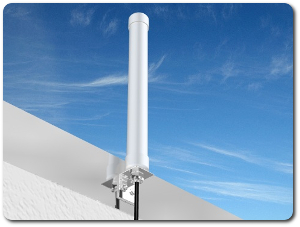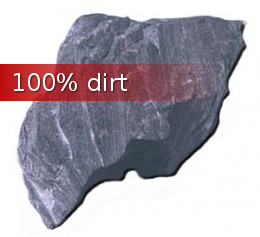Fuel your home and electrical power generator using free unmetered septic tank biogas
Getting Off Oil, World news Sunday, August 19th, 2012
If you live outside a town or city limit, anywhere in the World, you can heat your home every year, for free, using your septic tank. Year round, you can generate and collect free biogas fuel to fuel your home heating gas furnace, gas fireplace, gas generator, or other gas fueled appliances using your existing septic tank. The free biogas fuel is generated naturally 24/7 and 365 days a year.
Biogas is a gas produced by the biological breakdown of organic matter in the absence of oxygen. Organic waste such as dead plant and animal material, animal feces, and kitchen waste can be converted into a gaseous fuel called biogas. Biogas originates from biogenic material and is a type of bio fuel.
Biogas is produced by the anaerobic digestion or fermentation of biodegradable materials such as biomass, manure, sewage, municipal waste, green waste, plant material, and crops. Biogas comprises primarily methane (CH4) and carbon dioxide (CO2) and may have small amounts of hydrogen sulphide (H2S), moisture and siloxanes.
The gases methane, hydrogen, and carbon monoxide (CO) can be combusted or oxidized with oxygen. This energy release allows biogas to be used as a fuel. Biogas can be used as a fuel in any country for any heating purpose, such as home heating and cooking. It can also be used in anaerobic digesters where it is typically used in a gas engine to convert the energy in the gas into electricity. Biogas can be compressed, much like natural gas, and used to power motor vehicles.
Farmers from around the World can drastically lower their operating costs simply by collecting, storing and burning biogas. Manure makes the best biogas. Manure from horses, cattle and pigs can be used to fuel their entire farming operation. Excess amounts of biogas fuel can be used to generate electrical power. Farmers can use their free unmetered biogas to power their own gas electrical power generating plants and distribute this clean energy to their rural neighbors.
Rural dwellers from around the World can also reduce their fuel and home heating and electrical power costs simply by collecting, storing and burning the biogas that is created naturally in their septic tanks. This free biogas can fuel a gas furnace, gas fireplace, gas generator, or other gas fueled appliances.
To utilize this free unmetered fuel source all you need to do is modify your existing septic tank by placing a biogas collector on top of your existing septic tank. Use any large “airtight” plastic or metal container (even an automotive plastic fuel tank, oil drum, or furnace oil tank) as your biogas collector. Join the septic tank to the collector using mass produced flexible plumbing tubing. Run a pipe from the top of the collector to just above ground height. Attach a gas regulator value (like the ones used for barbecues) to the top of pipe to control the gas flow. Fill in with dirt and let mother nature generate a lifetime supply of free ecofriendly biofuel.
Using biogas generated naturally from septic tanks and manure anabolic digestion has an added ecological benefit too. Burning biogas can help reduce global climate change. Normally, septic sewage and manure that is left to decompose releases two main gases that contributes to global climate change: nitrogen dioxide and methane. Nitrogen dioxide (NO2) and methane both warms the atmosphere. By converting septic sewage and manure into a methane biogas fuel via anaerobic digestion, the millions of cows in the United States would be able to produce one hundred billion kilowatt hours of electricity, enough to power millions of homes across the United States. Furthermore, by using manure as a methane biogas fuel instead of letting it decompose, we would be able to reduce global warming gases by ninety-nine million metric tons. There are over 300 million people in the United States. They could potentially produce 300 times more electrical power than cows or 3 trillion kilowatt hours of electricity – enough to power every home in the United States.
The key to generating biogas through anabolic digestion in a septic tank is to remove as much excess liquid waste from the septic tank as possible. The easiest step to take to insure the septic tank isn’t flooded is to use less and waste less water. Too much water will reduce the biogas generation.
One way to ensure greater biogas production is to periodically pump as much of the waste water (sewage slurry) from the tank, as possible. Incorporating a sewage pump – a type of sump pump that is intended for use with waste water – into your septic tank biogas generating system will increase the biogas production. As the pump (only should be done periodically) removes excessive waste water from the top of the solid sewage it will also create a vacuum in the tank. That is an added benefit as biogas is produced by the biological breakdown of organic matter in the “absence of oxygen” – in other words in a vacuum. Where do you pump the excess waste water? To your pre-existing septic bed (also called a drain field). The liquid waste or effluent already flows out of the tank and evenly distributed into the soil through the septic bed.
Short URL: https://presscore.ca/news/?p=7042

 The Halifax International Security Forum was founded in 2009 as a propaganda program within the German Marshall Fund (founded June 5, 1972 by West German Chancellor Willy Brandt) by the Crown in Canada using Crown Corp ACOA & DND funds. The Halifax International Security Forum is a front that is used to recruit top US, UK and Canadian gov and military officials as double agents for Canada's WWI, WWII enemy and wage new Vatican Germany Cold War.
High Treason: s.46 (1) Every one commits high treason who, in Canada (c) assists an enemy at war with Canada, ..., whether or not a state of war exists". Every one who, in Canada assists Canada's enemies wage "piecemeal WWIII" Cold War by organizing, funding and participating in the Germany government politically and militarily benefitting / lead Halifax International Security Forum is committing high treason.
The Halifax International Security Forum was founded in 2009 as a propaganda program within the German Marshall Fund (founded June 5, 1972 by West German Chancellor Willy Brandt) by the Crown in Canada using Crown Corp ACOA & DND funds. The Halifax International Security Forum is a front that is used to recruit top US, UK and Canadian gov and military officials as double agents for Canada's WWI, WWII enemy and wage new Vatican Germany Cold War.
High Treason: s.46 (1) Every one commits high treason who, in Canada (c) assists an enemy at war with Canada, ..., whether or not a state of war exists". Every one who, in Canada assists Canada's enemies wage "piecemeal WWIII" Cold War by organizing, funding and participating in the Germany government politically and militarily benefitting / lead Halifax International Security Forum is committing high treason.
 Please take a moment to sign a petition to
Please take a moment to sign a petition to 









































 1917 Code of Canon Law, Canon 185 invalidates (voids) all papacies since October 26, 1958 due to the fact Cardinal Giuseppe Siri was elected Pope on the Third ballot on Oct 26 1958 but the new Pope Gregory XVII was illegally prevented from assuming the office. A Pope was elected on October 26, 1958. Thousands of people witnessed a new Pope being elected by seeing white smoke and millions were informed by Vatican radio broadcasts beginning at 6:00 PM Rome time on October 26, 1958. The papacy of Francis, Benedict, John Paul II, John Paul I, Paul VI, John XXIII and any and all of their respective doctrines, bulls, letter patents and the Second Vatican Council are all invalidated (having no force, binding power, or validity) by Canon 185 because the 1958 conclave of cardinals elected Cardinal Giuseppe Siri Pope on Oct 26 1958. Cardinal Giuseppe Siri accepted the papacy by taking the name Pope Gregory XVII but was illegally prevented from assuming his elected office.. According to Canon 185 Cardinal Angelo Giuseppe Roncalli illegally assumed the papacy 2 days later by fraud and grave fear, unjustly inflicted against Cardinal Giuseppe Siri who was lawfully elected Pope Gregory XVII. Because no Pope has been lawfully elected since October 26, 1958 the Holy See (la Santa Sede/Seat) remains vacant.
1917 Code of Canon Law, Canon 185 invalidates (voids) all papacies since October 26, 1958 due to the fact Cardinal Giuseppe Siri was elected Pope on the Third ballot on Oct 26 1958 but the new Pope Gregory XVII was illegally prevented from assuming the office. A Pope was elected on October 26, 1958. Thousands of people witnessed a new Pope being elected by seeing white smoke and millions were informed by Vatican radio broadcasts beginning at 6:00 PM Rome time on October 26, 1958. The papacy of Francis, Benedict, John Paul II, John Paul I, Paul VI, John XXIII and any and all of their respective doctrines, bulls, letter patents and the Second Vatican Council are all invalidated (having no force, binding power, or validity) by Canon 185 because the 1958 conclave of cardinals elected Cardinal Giuseppe Siri Pope on Oct 26 1958. Cardinal Giuseppe Siri accepted the papacy by taking the name Pope Gregory XVII but was illegally prevented from assuming his elected office.. According to Canon 185 Cardinal Angelo Giuseppe Roncalli illegally assumed the papacy 2 days later by fraud and grave fear, unjustly inflicted against Cardinal Giuseppe Siri who was lawfully elected Pope Gregory XVII. Because no Pope has been lawfully elected since October 26, 1958 the Holy See (la Santa Sede/Seat) remains vacant.
 Hold the Crown (alias for temporal authority of the reigning Pope), the Crown appointed Governor General of Canada David Lloyd Johnston, the Crown's Prime Minister (servant) Stephen Joseph Harper, the Crown's Minister of Justice and Attorney General Peter Gordon MacKay and the Crown's traitorous military RCMP force, accountable for their crimes of treason and high treason against Canada and acts preparatory thereto. The indictment charges that they, on and thereafter the 22nd day of October in the year 2014, at Parliament in the City of Ottawa in the Region of Ontario did, use force and violence, via the staged false flag Exercise Determined Dragon 14, for the purpose of overthrowing and besieging the government of Canada contrary to Section 46 of the Criminal Code. In a society governed by the rule of law, the government and its officials and agents are subject to and held accountable under the law. Sign the online
Hold the Crown (alias for temporal authority of the reigning Pope), the Crown appointed Governor General of Canada David Lloyd Johnston, the Crown's Prime Minister (servant) Stephen Joseph Harper, the Crown's Minister of Justice and Attorney General Peter Gordon MacKay and the Crown's traitorous military RCMP force, accountable for their crimes of treason and high treason against Canada and acts preparatory thereto. The indictment charges that they, on and thereafter the 22nd day of October in the year 2014, at Parliament in the City of Ottawa in the Region of Ontario did, use force and violence, via the staged false flag Exercise Determined Dragon 14, for the purpose of overthrowing and besieging the government of Canada contrary to Section 46 of the Criminal Code. In a society governed by the rule of law, the government and its officials and agents are subject to and held accountable under the law. Sign the online  Two of the most obvious signs of a dictatorship in Canada is traitorous Stephen Harper flying around in a "military aircraft" and using Canadian Special Forces "military" personnel from JTF2 and personnel from the Crown's traitorous martial law "military" RCMP force as his personal bodyguards.
Two of the most obvious signs of a dictatorship in Canada is traitorous Stephen Harper flying around in a "military aircraft" and using Canadian Special Forces "military" personnel from JTF2 and personnel from the Crown's traitorous martial law "military" RCMP force as his personal bodyguards.




































